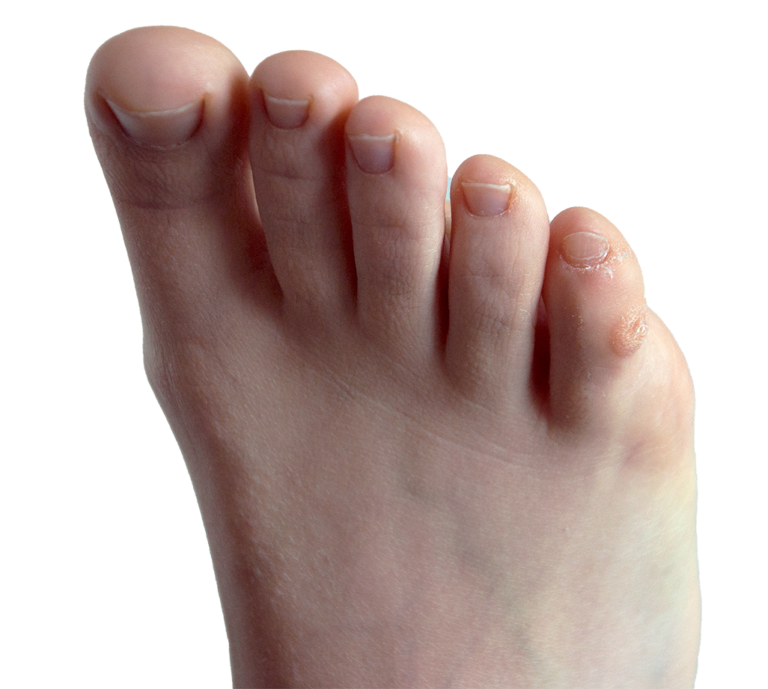Welcome to Tri-County Foot & Ankle
Corns

What are Corns?
Corns are thickened areas on the skin’s surface, to the point of being irritating and sometimes painful. Commonly found on the feet, corns are circular or cone-shaped and develop where there are areas of pressure or friction, such as on the little toe when it rubs up against shoes or on the ball of your foot.
They are often confused with a callus, but there is a difference between them. Corns can be raised bumps that are painful to the touch. They consist of a rough, thick area of skin that may be dry or waxy. Corns tend to be surrounded by skin that is inflamed, and are usually much smaller than calluses.
Treatment
The best treatment for varies from person to person and is best determined by one of our foot doctors at TCFA. Certain topical over-the-counter products may be suggested, or a more serious treatment may be prescribed. Diabetics should consult with a podiatrist immediately if they have developed a corn, as small wounds such as these can develop into more serious conditions.
Orthotic inserts, which are fitted by a podiatrist, may also help with treating corns. Inserts fit right into the shoes and adjust the way the feet fit into the shoes, thus fixing the way one walks. Proper-fitting orthotics can help reduce friction, which can, in turn, help reduce corn formation and exacerbation.
Surgery is rarely used to treat corns, but does occur on occasion. Corn surgery actually deals with the underlying issue that causes corns. During surgery, the bone is shaved and any abnormalities are corrected, thus reducing the amount of friction that occurs during walking.
To prevent corns, the first step is reducing friction. Always wear shoes that fit well and don’t rub the feet. Wearing cushioned insoles in your shoes can also reduce friction. While there are many ways to prevent corns, it is best to consult a TCFA podiatrist with any questions you may have.
